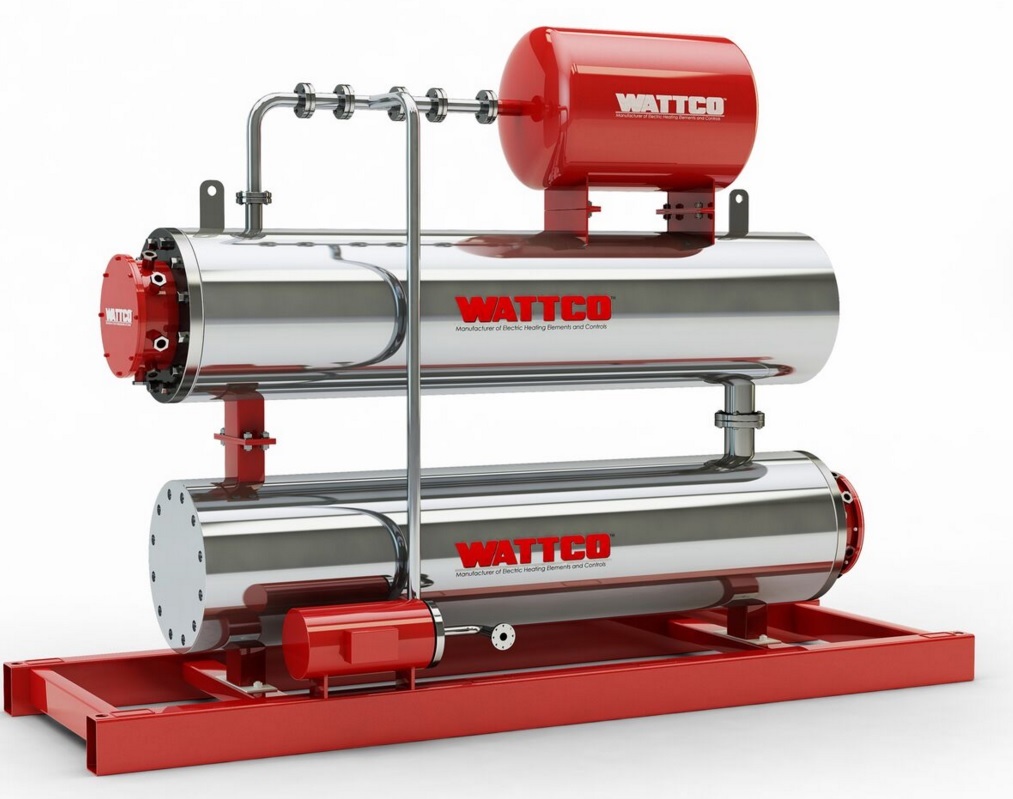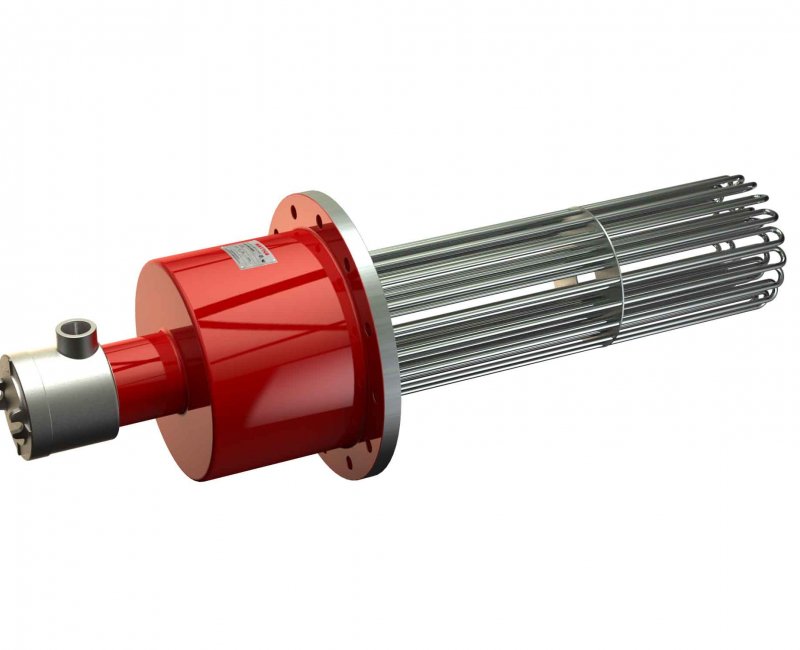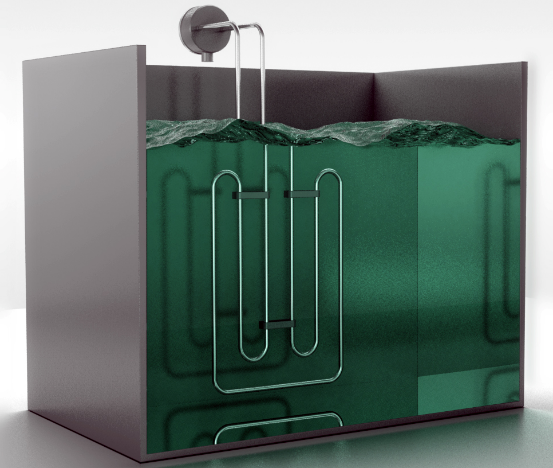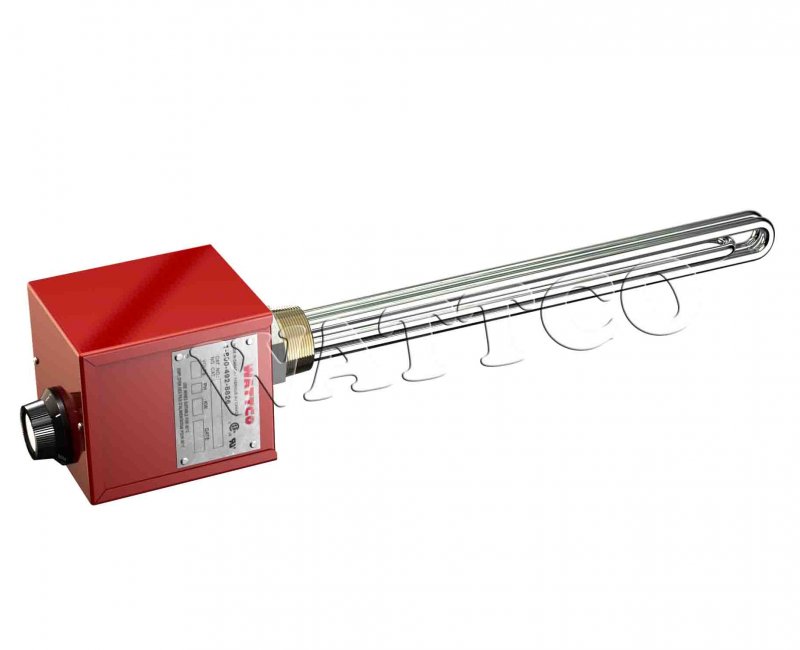Circulation Heaters, also known as “in line heaters,” have uses in many applications. They can use steel, stainless steel, or titanium depending on the application. Lube oil and waste oil applications often use steel for circulation heaters. This is because it is fairly inexpensive compared to stainless steel counterpart.
Water circulation heaters use stainless steel because of its anti-corrosive qualities. In both applications, a pump flows the liquid, such as water or glycerol, through a closed pipe circuit. The liquid is reheated as it flows through the circulation heater.
A major consideration for this application is viscosity. Electric circulation heaters generate heat, making the medium less viscous. The less viscous the fluid, the easier it is to pump through a circuit of pipes.
Industrial circulation heaters come in a range of watt densities. Watt densities are specifically designed for the medium they will heat. The required wattage to heat the oil or water is highly correlated to the flow rate (in GPM).
- The fluid enters through the inlet closest to the flange heater.
- Heat gets applied to the fluid as it flows within a vessel chamber.
- The fluid exits the outlet nozzle or flange.
- It circulates throughout the piping circuit.
Insulation is often required for vessels to preserve the heat within the vessel. This results in efficient heat application, reducing unnecessary costs through heat loss. Electric circulation heaters can use digital thermocouple probes or RTDs.
This allows them to maintain the oil or water at the preferred temperature. Many applications use liquids with low flash point. These require explosion-proof housing (NEMA 7) to avoid potential mishaps.
Circulation heaters heat fluids, gases, and oils efficiently in a closed-loop system. It offers uniform heat distribution and controls temperature for the process that requires consistency. It is used in petrochemicals, food processing, and power generation, as they heat substances like water, fuel, hydraulic fluids, and corrosive liquids.
These heaters contain built-in thermostats for safety and energy efficiency and reduce heat loss. Its compact design helps to integrate into pipelines, and storage tanks and making them essential to maintain optimal process conditions in industrial environments.
Circulation Heating Shipping
Wattco uses its decades of experience shipping our industrial heaters worldwide. When shipping across borders, Wattco can handle all necessary import, customs and duties responsibilities to ensure that you receive your product on time and on spec.
Wattco ships using all mediums upon request including: truck, train, container ship and by air freight when mission critical rush delivery is required.
Wattco Circulation Heater Features
Other useful features found with electric circulation heaters are drain valves. They are easy to install in any location on the vessel, allowing for easy maintenance of the heater. The water or oil can be purged through the drain valve allowing for maintenance on the heating elements. Calcium deposits and other residues can build up on heating elements. These require cleaning several times a month.
Circulation heaters also come with horizontal or vertical mounting, depending on your application. Skid mounted vessels are used in oil heating industries that require mobility. WATTCO™ electric heaters are also available in different terminal boxes.
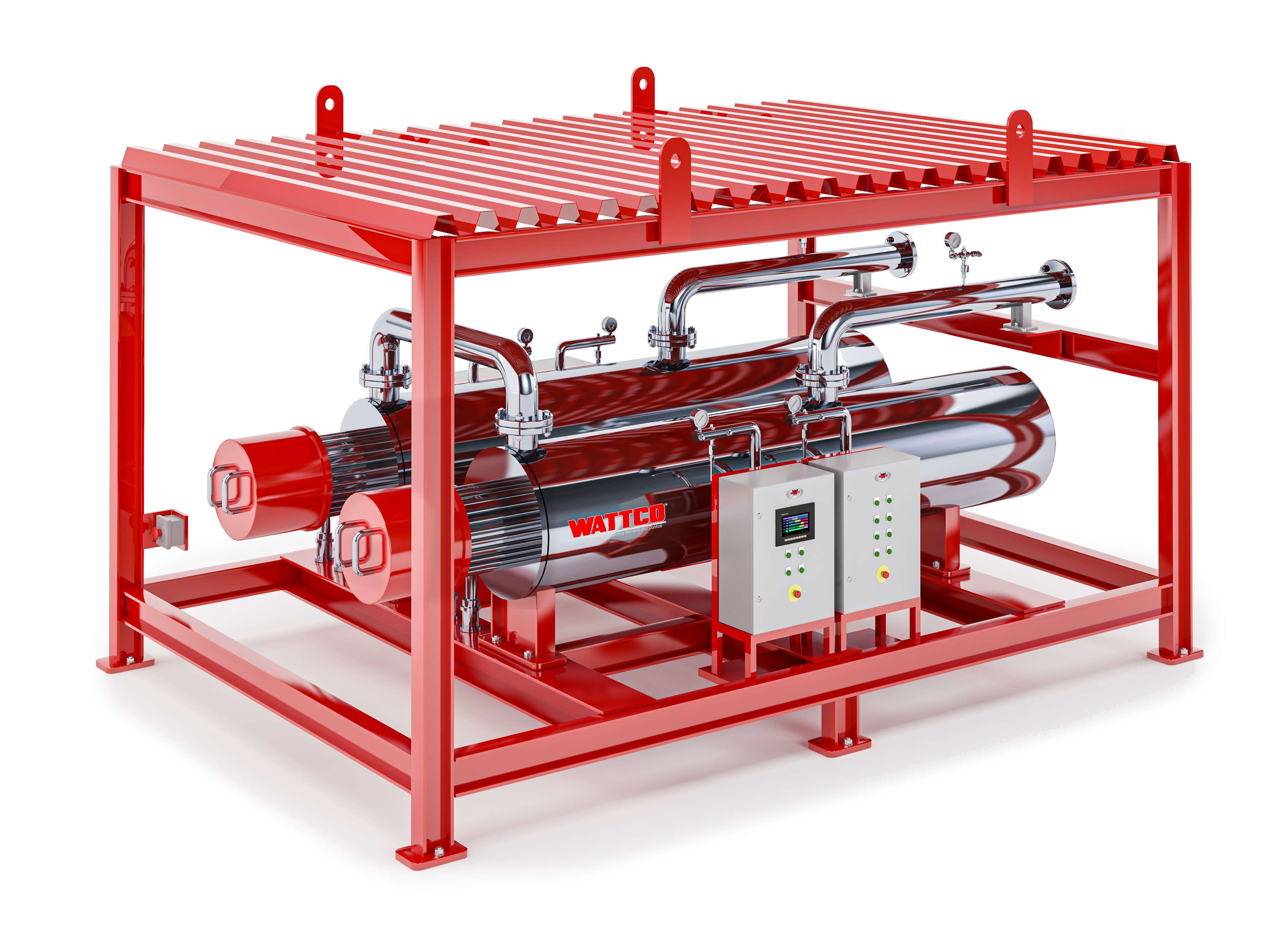 These include moisture resistant or explosion proof terminal boxes for hazardous environments. WATTCO™ circulation heaters are an exceptional choice for heating process liquids. They use materials that are resistant when heating corrosive mediums.
These include moisture resistant or explosion proof terminal boxes for hazardous environments. WATTCO™ circulation heaters are an exceptional choice for heating process liquids. They use materials that are resistant when heating corrosive mediums.
Usage of Wattco Circulation Heaters
The advantage of Wattco’s circulation heaters is heating the fluids in a closed-loop system. The applications of circulation heaters are multiple and distinct.
- The circulation heaters are used in oil refineries, petrochemical plants, and pipelines for heating crude oil, natural gas, and other petroleum products.
- It is used in the food and beverage industry for cooking, pasteurization, and mixing purposes.
- It is used in the plastic and rubber manufacturing industries that heat the plastics and rubber at a specific temperature for molding and extrusion.
- The circulation heaters are used in the welding process to preheat the metals before forging.
- The circulation heaters are implemented in large buildings or industrial facilities.
- It is used in the air-handling units that control the temperature of HVAC systems.
- Used in industrial and commercial hot water systems such as hotels and large buildings.
- Uses in the oil or gas pipelines to maintain the temperature and prevent it from freezing or viscosity issues.
- It heats the oil and gas stored in tanks to verify the proper flow.
- Used to preheat the engine to check the optimal performance and start-up efficiency in cold conditions.
- Used in solar thermal systems to stabilize the temperature of a transfer fluid.
- It is used in research laboratories to provide consistent temperature control for experiments and processes.
- Used in the marine to heat the fluid in the shipboard system for propulsion and other needs.
- Used in aircraft systems to maintain the optimal temperatures.
- It is used in the pulp and paper industry to heat the water and chemicals.
- In the textile industry, it is used for heating the fluids during dyeing and finishing.
Closed Loop Circulation Heaters
Circulation heaters are also used when heating closed loop systems. These can require high temperatures of up to 1000℉. These applications use large flange heating vessels that contain the gas and heating it efficiently. It requires low maintenance and provides excellent heat transfer.
Circulation Heaters for Oil & Gas Companies
Oil and Gas companies use circulation heaters in heating oils. Electric heaters assist them in modifying the viscosity levels of their heating oils. Crude oil enters an inlet of the vessel at a cool temperature. The circulation heater reheats the oil. The oil then exits the outlet at a temperature more convenient for flow as it travels from one end of the transport pipe to the other.
Closed Loop Circulation Heaters
Circulation heaters are also used when heating closed loop systems. These can require high temperatures of up to 1000℉. These applications use large flange heating vessels that contain the gas and heating it efficiently. It requires low maintenance and provides excellent heat transfer.

Flanged heaters are commonly used in many chemical, petroleum and water based applications. Consisting normally of an ANSI rated flange with several hairpin elements or bugle tubular elements extending from the face of the flange, this electric heater uses direct heat application to the liquid medium.
A thermowell is often used within the bundle of elements to allow for a probe (either a thermocouple, RTD or basic mechanical thermostat) to relay temperature readings to a digital control panel that cycles and maintains the desired target temperature.
Often a high limit sensor is also used to help protect liquid mediums from over heating and, offers protection to the flange heater as well. 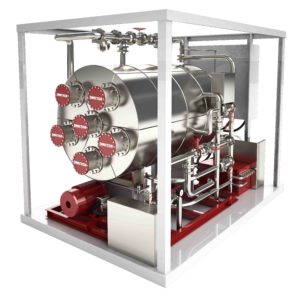
Shipping
Wattco uses its decades of experience shipping our industrial heaters worldwide. When shipping across borders, Wattco can handle all necessary import, customs and duties responsibilities to ensure that you receive your product on time and on spec.
Wattco ships using all mediums upon request including: truck, train, container ship and by air freight when mission critical rush delivery is required.
Flange Immersion Heater Design & Features
- Standard 150-pound flanges; 300 and 600 pound flanges are also available.
- Steel, copper, Incoloy, Inconel, stainless steel, titanium and other heater sheaths custom tailored to application requirements
- ANSI flange size 3” – 42” flange size
- Power rating: 1kW to 1MW+
- Digitally Controlled
- Integral thermocouples and thermostats allow internal temperature control and monitoring (0-255F), (55-550F)
- Recompacted elements provide insulations integrity and long life
- CSA & UL recognized elements to 600VAC assures reliable and safe performance
- ATEX & CSA certified terminal enclosure available that complies to strict safety standard
Flanged Heater Uses
Wattco flanged heaters allow the flexibility of using many different alloys to help resist corrosion and maintain life longevity of the flanged heating element Steel flanges are typically used for lubricant oils, heavy and light oils, waxes as well as mildly corrosive liquids and low flow gas heating. Steel flanges can also be found in immersion heaters for water tanks.
These flanged heaters are used to process soap and detergent solutions as well as demineralized or deionized water. Stainless steel flanged heaters are used with mildly corrosive solutions as well as severe corrosive solutions.
Food applications also use stainless steel for sanitary purposes. The sheath materials used in a flanged heater can be steel, stainless steel, copper as well as exotic alloys such as inconel, hastalloy and titanium.
Extremely corrosive environments such as salt water should use exotic alloys such as titanium to avoid sheath breach over excessive durations. Industries that use exotic alloys can include military, chemical and process industries.
Flanged heaters use bent tubular elements that are brazed or welded onto a flange. Extra wiring boxes in which the electrical connections are fixed are provided with it. Some heaters have already been prefixed into flanges, but others can be welded on matching flanges that are mounted on a nozzle or tank wall.
- Instant Heating: Flanged heaters generate heat faster and evenly for liquids, gases, and viscous fluids and are used in chemical processing and petrochemicals.
- Durability: It works under high pressure and harsh environments and is used in industries like oil and gas, water treatment, and power generation.
- Versatility: Heats all media, like water, oil, chemicals, and gases. It is customizable to the required flanged size and client needs.
- Energy Efficiency: Targeted heating and integration with a modern control system reduces energy consumption.
- Safety: Embedded with safety measures like temperature control, over-temperature protection, pressure management, and operating safe during critical environments.
- Low Maintenance: These heaters are easy to install and replace, reducing downtime and operational costs.
Wattco offers flanged heaters in varying kilowatts ratings, voltages, temperature ranges, sheath materials and so on. Flanged immersion heaters are one of the most widely used industrial heater options in the oil sector.
Compared to other oil heaters, they are easier to install, are specifically designed for use in pressurized vessels and more manageable. Typical applications include preheating different grades of oil, cleaning tanks and heat transfer. Click here to get a quote on a flanged heater today or feel free to contact one of our experts for more information.

Over the side (OTS) heaters are a popular industrial heating product due to their cost-efficiency and practicality. Using a water-resistant terminal housing, these industrial heaters come in many shapes and sizes to fit your tank’s dimensions and specifications.
Mobility
Wattco’s over the side immersion heaters are custom designed with multiple tubular elements and a thermowell to hold your temperature probe. Shaped to fit within your standard (or non-standard tank), the economic feasibility can meet the budget of any project manager. The mobility of these heaters allows for usage in multiple containers and can be a superior choice for many project managers.
Wattco™ over the side heater (OTS) features
Wattco™ uses high-quality stainless steel and other exotic alloys to meet the requirements of any application. With a digital control panel, this heater becomes the perfect solution for heating large containers with no access to the liquid except from the top. Brackets are used to support the heater onto the wall of the tank, and cold sections are carefully calculated to prevent overheating when water or liquid levels drop below certain levels as a result of evaporation or drainage.
Over the side (OTS) heater industrial uses
Using high-quality alloys, Wattco™’s over the side heaters are strong enough to physically withstand many harsh environments both indoors and outdoors. Commonly used in petroleum and chemical industries, it is an exceptional choice for projects with limited budgets.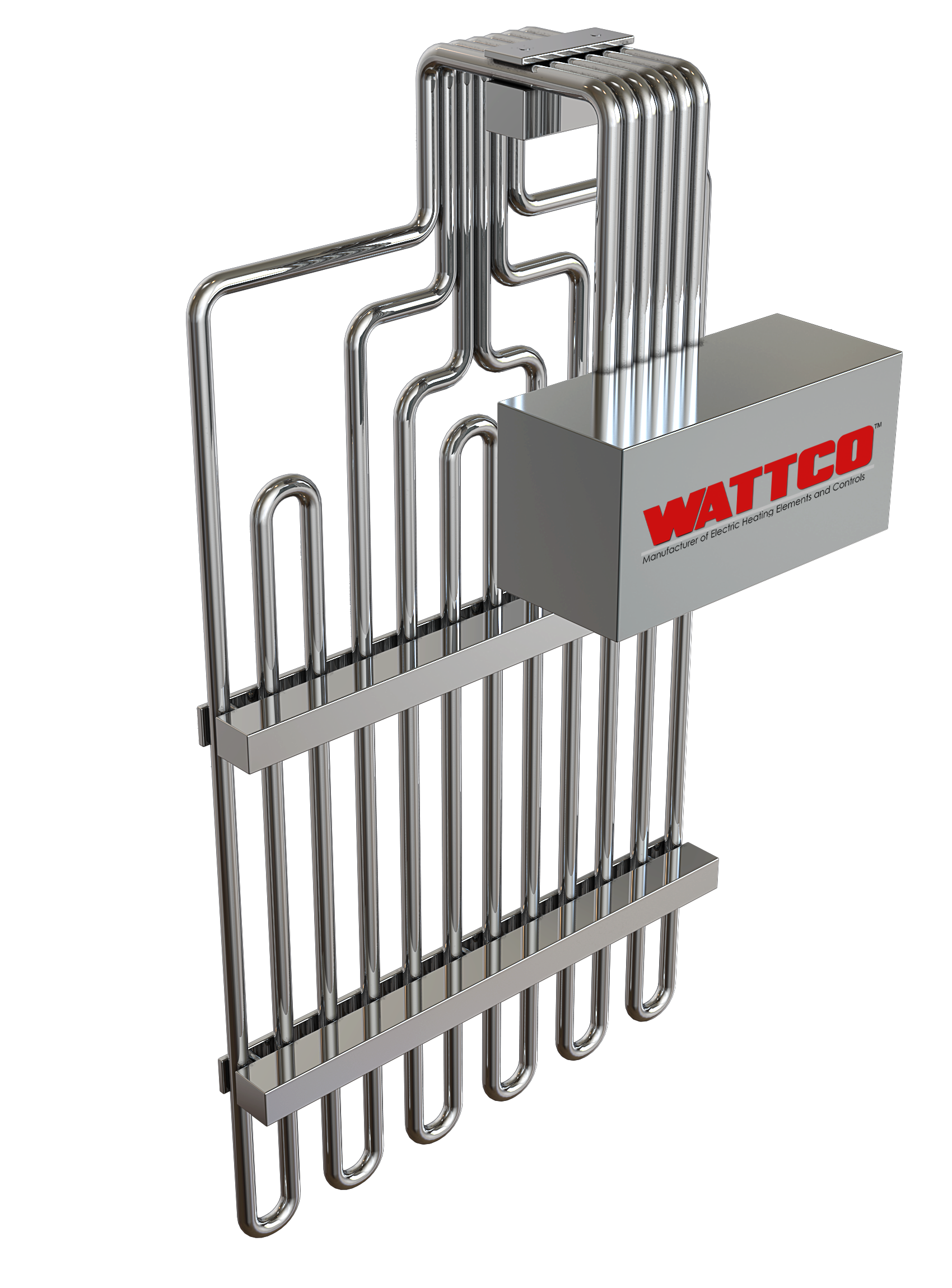
Wattco’s over the side (OTS) heaters advantages
Over the side immersion heaters are specifically designed to be installed in the upper portion of tanks. The substance to be heated is either below the industrial tank heater or onto one side, hence the name. The main advantages of this approach are that ample space is left in the tank for other operations to take place, and the heater can easily be removed when the required temperature is achieved within the substance.
The heating element of an over the side process heater is usually made from steel, copper, cast alloy and titanium. A coating of fluoropolymer or quartz can be provided for protection.
There are several applications in which over the side heaters can be used, such as heating oils of varying viscosities, degreasing solutions, heat transfer oils and caustic solutions.
Get a quote on an over the side heater today. Wattco™ also manufactures other popular industrial heating solutions such as infrared heaters, pipe heaters and circulation heaters. Click here to view all of our products.

Screw Plug heaters from WATTCO™ consist of hairpin tubular elements that are brazed or welded into a machined pipe thread fitting, (normally an NPT fitting for North American standards) which are then screwed directly through a threaded coupling in the tank wall or vessel, or installed in pipe. Screw plug heaters are an easy way to heat up solutions in smaller containers that also require controls. Mechanical thermostats or Digital control panels can be used with these immersion heaters to help reach target temperatures with great accuracy meeting your project objectives. Additional thermowells can be installed for high limit temperature probes to help protect your liquid and processes. 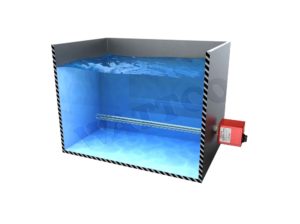 Screw Plug industrial heaters from WATTCO™ are used for heating gases and liquids in tanks or vessels. These submersible heating elements have been designed so that heat transfer will occur at a rapid rate, enabling quick liquid heat up times. Typically they are implemented in the food and beverage industry, laboratory clinics, applications involving hydraulic oils and lubricants as well as more sophisticated uses such as heating up flammable liquids or gases which require explosion proof housing. Get a quote on a screw plug heater solution today or feel free to contact us today for any additional information.
Screw Plug industrial heaters from WATTCO™ are used for heating gases and liquids in tanks or vessels. These submersible heating elements have been designed so that heat transfer will occur at a rapid rate, enabling quick liquid heat up times. Typically they are implemented in the food and beverage industry, laboratory clinics, applications involving hydraulic oils and lubricants as well as more sophisticated uses such as heating up flammable liquids or gases which require explosion proof housing. Get a quote on a screw plug heater solution today or feel free to contact us today for any additional information.


